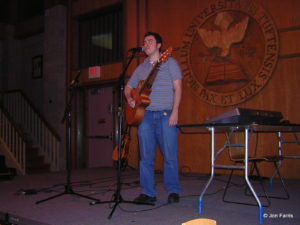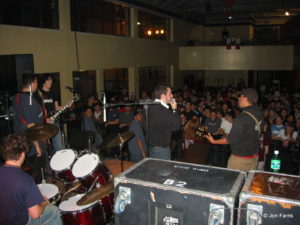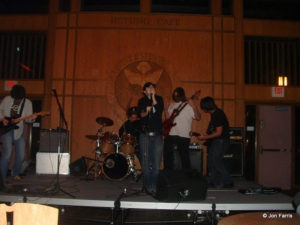Tom Frank
USA Today
September 29, 2015
http://www.usatoday.com/story/news/2015/09/29/nhtsa-police-high-speed-pursuit/72617864/
The U.S. government has drastically understated the number of people killed in high-speed police car chases, potentially by thousands of fatalities over several decades, a USA TODAY investigation shows.
The National Highway Traffic Safety Administration overlooked at least 101 motor-vehicle deaths in 2013 that were related to a police chase, according to a USA TODAY review of police reports and internal documents, court records, police-car videos and news accounts based on police statements. NHTSA’s count of 322 chase-related deaths in 2013 — the most recent year for which its records are publicly available — understates the total by at least 31%, the investigation shows.
NHTSA’s undercount suggests that the actual number of people killed in police chases since 1979 could be more than 15,000 — far more than the 11,506 chase-related deaths found in the agency’s public records — and that chases result in a death much more frequently than studies have stated.
The findings expose potentially major flaws in how the federal government tracks motor-vehicle fatalities and, to a lesser extent, how police document high-speed chases, which often result in innocent people being killed and have been sharply restricted in some cities. USA TODAY reported in July that as many as one-fourth of those killed were bystanders and another one-fourth were passengers in cars fleeing police.
In most of the 101 deaths found by USA TODAY, the failure to say they were related to a police chase points to problems with how NHTSA gathers information from states on fatal crashes and codes the crashes in a database used by Congress, safety experts, local officials and insurance companies to find trends and possible safety improvements in motor vehicles, driving laws and policies.
“That’s pretty significant,” said Frederick Rivara of the University of Washington, a leading researcher on accident and injury prevention who has studied fatal police chases. “You would not expect to have that amount of undercounting,”
USA TODAY
High-speed police chases have killed thousands of innocent bystanders
NHTSA had no explanation for the findings and said it is now reviewing 30 crashes that it lists as not involving a chase but for which USA TODAY obtained a police report stating a chase was active at the time of a crash, or was related to a crash. Those 30 crashes resulted in 39 deaths.
“We are very interested in understanding if the cases were coded correctly,” NHTSA said in a statement, adding that it might consider changing the training and guidance it gives analysts. “We do appreciate your bringing these to our attention since we want to publish the best data possible.”
NHTSA is charged with recording and analyzing every fatal motor-vehicle crash, yet it has no record at all of at least 26 crashes, resulting in 38 deaths, that involved a motor vehicle being chased by police in 2013. The omissions include two of the year’s deadliest crashes: a police chase on March 20 in Kingsville, Texas, that resulted in seven deaths, and a Nov. 23 chase Falfurrias, Texas, that ended with five passengers being killed. Both crashes involved smugglers carrying undocumented immigrants and were well publicized.
The omissions also raise questions about NHTSA’s assertion in a July report that “nearly 100% of crashes involving a fatality make it into (the) database.”
“These data are critically important for helping us make the public safer and making motor vehicles safer and better,” Rivara said. “The community that does research on injuries trusts the NHTSA data for being accurate.”
Frederick Rivara is a leading researcher on accident
Frederick Rivara is a leading researcher on accident and injury prevention who has studied fatal police chases. (Photo: Handout)
NHTSA, an arm of the Department of Transportation, analyzes police reports, death certificates and other records for each of the roughly 30,000 fatal crashes a year, and codes each crash in a database on dozens of factors that may have caused or influenced the crash, ranging from a motorist’s speed, sobriety and driving history to the weather and road condition.
Although the database helps guide policy, the agency and police officials have long known about potential inaccuracies in the agency’s annual count of fatal police chases because the nation’s 18,000 police departments document crashes in widely varying ways, and NHTSA has no requirement that police note they were chasing a motorist. The International Association of Chiefs of Police in 1996 urged NHTSA to establish standards on when police departments should report chases so the agency could “accurately account for all pursuits.”
But NHTSA’s 148-page crash-reporting guidelines, first published in 1998, say nothing about reporting police pursuits, and its coding manuals are vague about when NHTSA analysts should list a crash as involving a chase.
“There’s no national database on any number of things police do,” said John Firman of the chief’s association, noting a dearth of information on police use of force that led to President Obama’s Police Data Initiative, launched in May. “The overarching issue is that in critical issues surrounding police activity, everybody wants to be able to say, ‘Here is a definitive, reliable database, so we can talk about national, regional and local issues.’ ”
USA TODAY found the 101 chase-related deaths by searching the Internet and a news database for articles. There could be more deaths that were not publicized by police or a news organization.
Researchers have used NHTSA data on police chases to recommend policies, including restrictions on the type of offenses for which police should chase a motorist. A growing number of police departments permit chases only of fleeing drivers suspected of a violent felony.
But by undercounting chase-related deaths, NHTSA could be unintentionally easing pressure on police to restrict chases, said Geoffrey Alpert of the University of South Carolina, a leading researcher on pursuits who has done studies for the Justice Department.
“It becomes less of an issue for the public and the politicians,” Alpert said, adding that NHTSA should stop counting chase-related deaths if it can’t count them precisely. “If it’s not accurate, why put out all these numbers?”
NHTSA spokesman Gordon Trowbridge, asked earlier this year how accurate the agency records are concerning police chases, said, “To the extent that information included in police action reports accurately reflects what happens, [the database] accurately reflects that information.”
NHTSA relies on analysts from each state to enter crash details into its database, and those analysts generally review only a police crash report, which typically runs a few pages and includes basic information about the people and motor vehicles involved along with a one-paragraph narrative. Some police departments do not mention a chase on the crash report, recording it instead on a separate, more-detailed document that NHTSA analysts do not read.
“There’s all kinds of things that NHTSA doesn’t ask about or know about,” said Capt. John Magill of the Miami Township Police in Ohio, where two officers were suspended for violating the department’s pursuit policy following their April 15, 2013 chase, which resulted in the deaths of two people in a fleeing car. The crash report — and NHTSA records — say nothing about a pursuit, which is described instead in a separate police file.
“It’s not my fault that they don’t ask me the right question,” Magill said of NHTSA.
The four-page Ohio Traffic Crash Report, used by police statewide, is typical of state crash forms. It has 50 boxes where officers enter a number or a check mark to note factors such as motor-vehicle type, injury severity and “contributing circumstances.” There’s no place to note a police chase, leaving it to officers to include that information in a one-paragraph narrative, or in a separate report, not read by NHTSA.
“We’re focused on the crash itself,” said Lt. Craig Cvetan of the Ohio State Highway Patrol. “A crash is not caused by a pursuit. The crash is caused by the actions of a driver, so that’s what the report documents.”
In Prince George’s County, Md., near Washington, D.C., police who chased Ronald Hayes Jr. on Dec. 8, 2013 did not mention the chase on the three-page crash report, even though Hayes was charged with fleeing or eluding police as well as manslaughter after he hit and killed two women in a minivan.
The police were not a “proximate or contributing factor” in the crash “and therefore [are] not mentioned” in the crash report, department spokeswoman Julie Parker said, adding that the chase was documented in a separate police record and in a news release. Police would note a chase in a crash report only if an officer was involved in the collision or if the officer’s driving “directly led to the impact,” Parker said.
The Prince George’s incident is one of at least 15 crashes in 2013 in which a crash report — and NHTSA records — say nothing about a police chase, but a driver was charged with fleeing police in a vehicle, or police records other than the crash report describe a chase, USA TODAY found.
Police have wide discretion not only in whether they mention a chase on a crash report, but also in whether they indicate that a chase contributed to a crash. NHTSA says a crash involves a police pursuit if a chase is active at the time of a crash, or if it has been called off but is “related to the crash.” Agency officials acknowledge that the definition is subjective, and that it relies heavily on how police describe crashes.
USA TODAY found 10 crashes resulting in 13 deaths in which police said they had called off their chase. In some of those cases, drivers continued speeding after police stopped, and it’s impossible to tell what role the initial chase played in the crash. USA TODAY did not include those 13 deaths in its tally of 101 chase-related fatalities not counted by NHTSA in 2013.
Contributing: Mark Hannan


















































